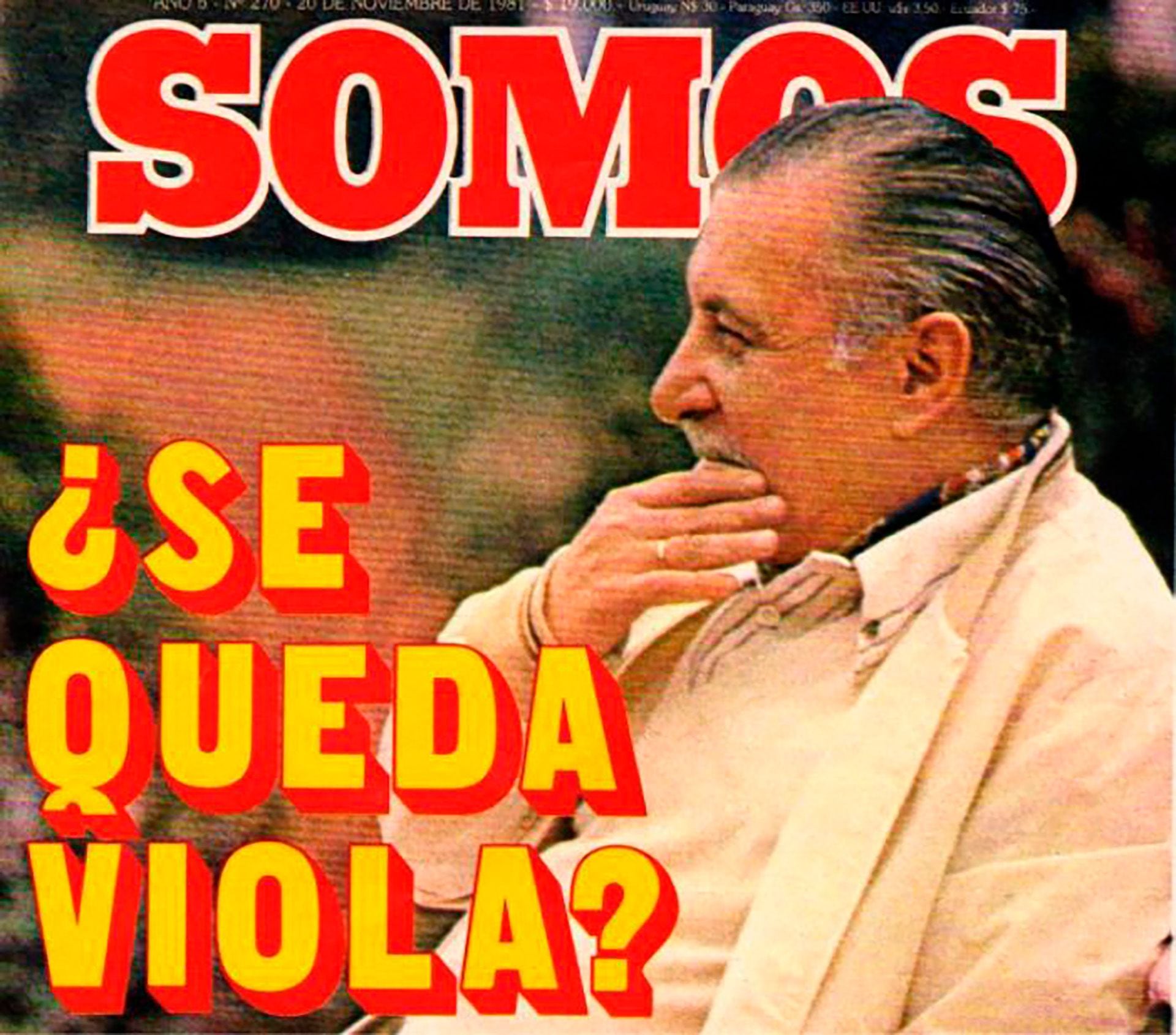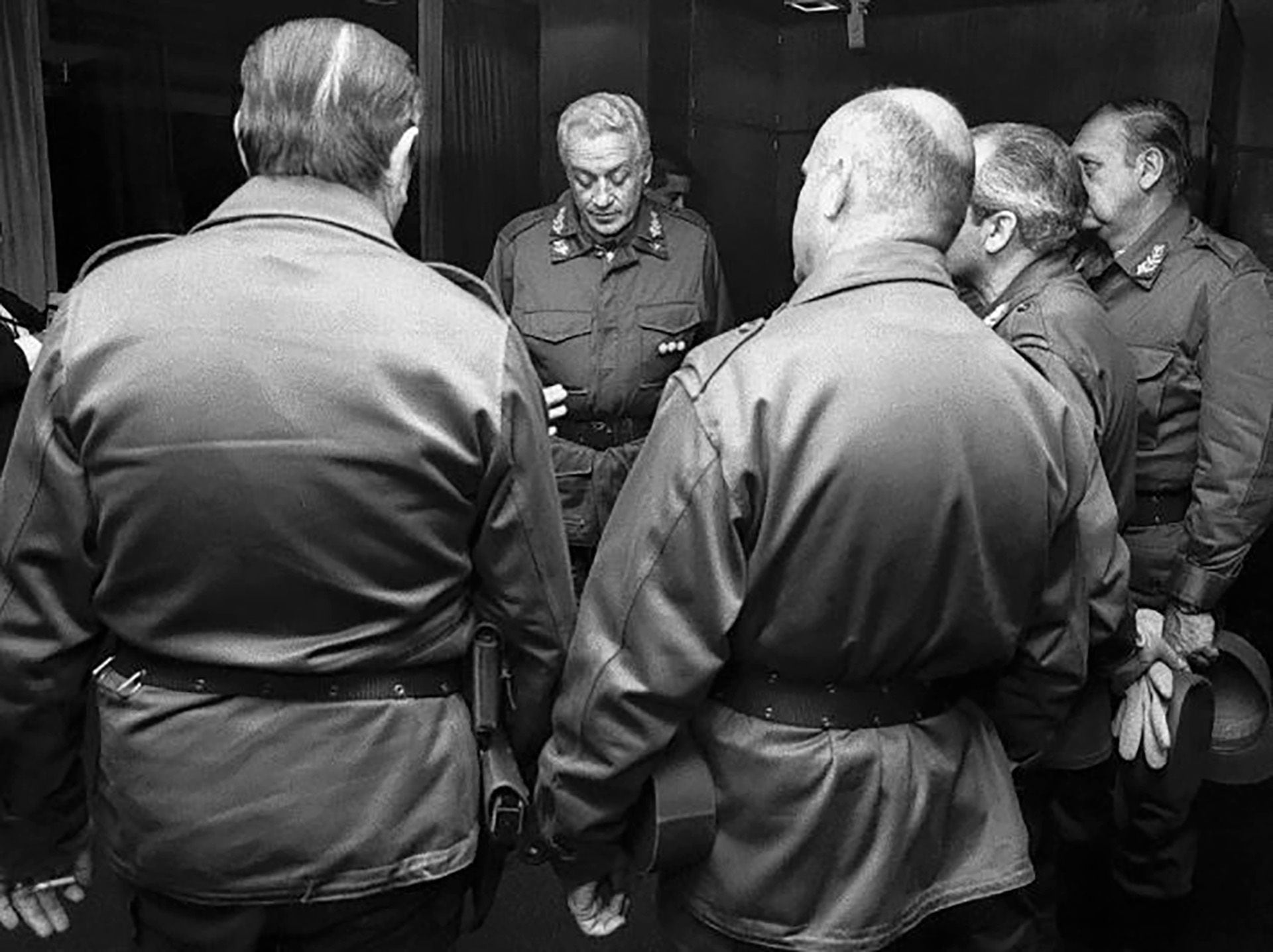
According to an evaluation of the time, the fall of María Estela Martínez de Perón in March 1976 was not due to a single reason. Among others, the climate of generalized violence; the generalized social disobedience and, flying over, enveloping everything, the overflow of all the variables of the economy. Already in the 1975 Central Bank Report you can see the symptoms of the inoccultable Argentine decomposition. It is the justicialist authorities themselves who described them: “1975 was characterized by severe difficulties in the external sector, the acceleration of the inflationary process and a decline in the level of economic activity. While the first ones manifested themselves throughout the year, inflation became more acute since June and recessive trends were evident since the third quarter.” Not only could all these ills not be solved, but also worsened during the administration of Jorge Rafael Videla and his Minister José Alfredo Martínez de Hoz, between 1976 and March 1981.
General Roberto Eduardo Viola assumed the de facto presidency on March 29, 1981, and during the weeks leading up to the inauguration of office, reports about the financial situation were worrying: as one observer stated, Tuesday, February 3, 1981, altering exchange rate patterns, took place in Buenos Aires a devaluation of 10 per cent of the peso at the request of the authorities that they were going to assume in March. Instead of achieving the tranquility that was sought, they brought to light the fragility of the economic situation.
The country lost approximately 300 million dollars a day and although the price of US currency touched 2,400 pesos, it was not found in the exchange offices. There seemed to be a climate of pre-coup against Viola and it was part of the enormous wear she endured after six months on the plain preparing for her assumption. The responsibility for erosion was primarily with the Armed Forces and also for an unhappy ending of Martínez de Hoz's economic team.
Another report in March 1981 said: “Today the price of 'call money' was between 450 and 500% per year and companies had to take money at 300% a year. Last week between $1 billion and $1.1 billion left [Argentina]. This led to the closure of the exchange offices with the Police on Friday, March 20 and the establishment of exchange control (the purchase of dollars is with a passport, travel ticket in hand and no more than 20 thousand dollars after filling out a form for the DGI)”. The observer also pointed out that “the people who are about to take over seem to have been in government for three years now, have suffered great wear and tear. I don't know if you shouldn't think that something will have to rush. There are two alternatives: 1) The coup within Viola's own coup; 2) A blow by Galtieri or General Domingo Bussi himself (before they are liquidated, passing them into retirement near the end of the year).

Faced with the prevailing confusion and trying to lay out a balm, Álvaro Alsogaray said on March 27 in El Economista: “It is possible that rarely, in Argentine history, has a President of the Republic come to government in such difficult circumstances. It is up to General Roberto Viola to begin a new stage, within the ongoing process, amid tremendous difficulties that cover all areas of national endeavor”, and he spoke of “the failure experienced and the lost opportunity”, that is, of the government of Videla and the management of Martínez de Hoz. He criticized “repressed inflation,” developmentalism and the pharaonic mentality, and “pragmatism and gradualism.” However, days earlier, contradicting engineer Alsogaray, Lieutenant-General Leopoldo Fortunato Galtieri gave a presentation to the active generals in which he described the economic situation as “flourishing”.
Regardless of what Galtieri said, the new Minister of Economy, Lorenzo Sigaut, focused his criticism on Martínez de Hoz, making him responsible for the economic crisis and the new Minister of Public Health (Amilcar Argüelles) publicly exposing the painful state of emergency villages. I mean, misery. Too many words after a long time of silence. The most severe criticism of the previous economic management came from the military government itself. By announcing a series of measures to reduce public spending and provide financial relief to companies, Minister Sigaut whitewashed the situation: he publicly reported that the foreign debt inherited from the management of José Alfredo Martínez de Hoz reached about 30 billion dollars and that by the end of the year it would reach 35 billion dollars. billion and reserves totaled about 5.5 billion and expected a trade balance deficit of almost $3 billion. Of the deficit in the national budget for 1981, originally estimated at 2.3 per cent of GDP, Sigaut said that in the first quarter alone it had reached 4.2 per cent. The Argentine Industrial Union (UIA) described the minister's measures as “insufficient” in the face of “the most serious crisis in history.”
“The military leadership has exploded because the Martínez de Hoz are going against the Sigaut, the retired military are against those who are active. The former go against the latter. We Argentines don't want any more confrontations. We will be standing in front, waiting for them to leave power,” observed Carlos Contín, Balbin's successor.
Words, pure words, that would not correspond to his conduct as of April 1982. As the weeks and months passed, the economic crisis uncovered a situation that few had predicted and Viola's power was constrained. The US weekly Newsweek on August 16 told its readers: “The Argentine Governing Board met with President Roberto Viola in July and gave him an ultimatum. Either it stabilizes the country's economy, burdened by inflation, in two months, or it is replaced. [...] His successor is probably General Leopoldo Galtieri, the officer Viola chose in 1979 to succeed him as commander-in-chief of the Army. Observers predict that Galtieri could return to Argentina an era of stricter social and monetary policies than those imposed by the more moderate Viola.” As mere examples of degradation, banknotes of 100 thousand and 500 thousand pesos were already circulating.
On Friday, September 11, Admiral Jorge Isaac Anaya was sworn in as commander-in-chief of the Navy. On assuming the Force, Anaya gave a message with some fundamental objectives: “Defence of national sovereignty throughout the maritime sphere, which will require constant vigilance and the permanent readiness to make the greatest sacrifices. The National Reorganization Process, for whose success we are indeclinably co-responsible, must achieve its objectives and ensure that Argentina does not suffer again from the frustrations and dramas of the past.” Without saying it he was talking about the quagmire of 1973. For his part, Admiral Armando Lambruschini, the commander who was leaving, said that “the Armed Forces are not isolated.” I didn't know what he was talking about.

While rumors of coup against Viola continued and the economic crisis worsened, on October 13, the President and his economic team exposed in front of the Military Junta in the Navy building, for hours and hours, the Executive's plans until 1984. Lorenzo Sigaut's participation alone lasted six hours.
Everything that transcended outside Argentina seemed like a comedy of entanglements: while the Minister of Economy, Lorenzo Sigaut, said “the one who bets on the dollar loses”, people crowded in front of the exchange offices to buy dollars. In a lapse linguae, the Minister of Trade and Maritime Interests, Carlos García Martínez, during an “off the record” with journalists accredited to his Ministry, even said that Argentina was “on the verge of collapse”. It seemed true, but it was not a question of airing it because it cost 400 million dollars to escape from the financial system.
Apart from the disorder that spread throughout the country, November 1981 is a key month. First, as if admitting the failure of the entire economic and financial management of the National Reorganization Process, the president of the Central Bank of the Argentine Republic, Egidio Ianella, signed the new million-peso note that was beginning to circulate. The highest-nominated banknote in the world. At almost sixty years of age, it was the second time he commanded the BCRA and he had to acknowledge that the fight against inflation was a failure (148.6% during the period). Second, on Monday, November 2, in Washington, General Galtieri was honored by the most select of Ronald Reagan's government and that was the birth of the “majestic general” said by Richard Allen, security adviser to the White House. Third, in Buenos Aires, on Monday, November 9, 1981, at 15.05, President Roberto Eduardo Viola along with his wife and son left in their armored car on their way to the Central Military Hospital. His intimates let it transcend that blood pressure had reached dangerous levels. In addition to stress, Viola was a 57-year-old man who smoked three bundles of “True” a day and drank whiskey without discretion in his long conversations. His physique was very worn out and he looked older, so they called him “the old man”. His attrition was not only reflected in his person, it was his government, the Process, that no longer had room for manoeuvre. “The process cannot be tainted,” Galtieri said.
On Sunday, November 29, Joaquín Morales Solá told readers in his customary Clarín political column that “only one thing is certain: some political shock will move Argentina before the end of the year.” Neither the journalist, whom they were trying to be a “poet”, nor his readers, imagined what would happen after December. The Recollect Naval Desks already spoke of Operation Malvinas as “an escape valve” to regain lost prestige and “change the social mood of this society”. In her own way, Anaya confessed it like this: “The process has deteriorated a lot and we have to look for an element that brings together society. That element is Falkland Islands.” On December 22, 1981, the same day that Galtieri took office, Admiral Anaya gave the first order to prepare “an updated plan” for the “occupation” of Port Stanley. Nothing would be the same anymore.
KEEP READING:
Últimas Noticias
Debanhi Escobar: they secured the motel where she was found lifeless in a cistern

The oldest person in the world died at the age of 119

Macabre find in CDMX: they left a body bagged and tied in a taxi
The eagles of America will face Manchester City in a duel of legends. Here are the details

Why is it good to bring dogs out to know the world when they are puppies




